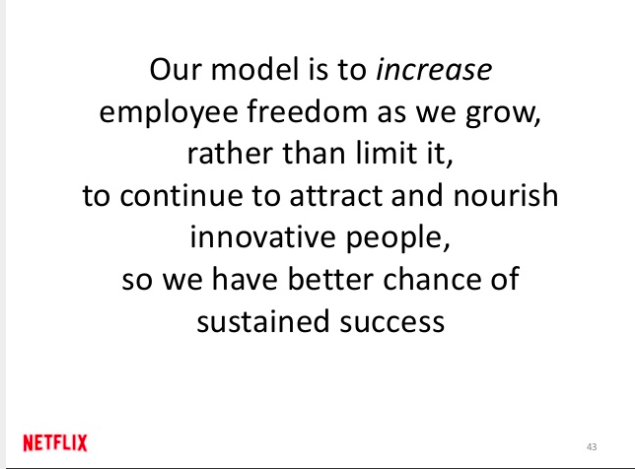How Do You Run Your Company As Headcount Grows?

I remember there were six of us after we closed our funding. Myself, my four co-founders, and our operations manager Dave.
[Do you want to grow your business? Maybe I can help. Click here.]
Two weeks later Sid joined as our design engineering director. Within two months we added three more design engineers bringing us to ten employees.
We held company meetings every Friday afternoon in the large conference room next to my office. We had one row of cubicles (that we bought for $100) that everyone sat in. There was room for four more rows of cubes before we ran out of space which we would a couple of years down the road.
The environment at this early stage was intimate.
When you’re in a small team environment, you get to know everyone very well. That’s the beauty of a really early stage startup.
You should take advantage of this stage of your company’s development to build strong bonds with you and your team.
You’ll likely be in the process of recruiting and building the first product at the same time. There will be a lot of pressure (and there should be) to get the product out.
Don’t lose focus on the importance of your company culture. Bringing in the so-called “brilliant jerk” can have a devastating effect on your long term company culture.
And it’s oh so tempting to bring in the brilliant jerk who will keep your project on schedule. Don’t do it. The brilliant jerk will lay waste to your team in the process.
One of the things we did, at this early stage, was set up the meetings and processes for later.
At the beginning, we were mostly a bunch of engineers working on the various products we were developing. Everything was focused on getting these products out on schedule.
Thursday morning at 10AM, we had our weekly engineering meeting. We went over each product in development, updated the schedule as needed, and talked about how to help any engineer that might be in trouble.
Friday afternoon at 1:30PM was my favorite meeting, the Crazy Idea meeting. What’s a Crazy Idea meeting you ask? It’s a meeting where anyone in the company can propose a new product idea.
The idea could just be one sentence, or it could be fully fleshed out. The only rule we had was that the author of an idea would get feedback on what we liked or disliked about the idea.
The meeting was a great way for us to brainstorm new products. Sometimes, a one sentence idea would lead to a debate about how to make the idea better. Then, maybe a week or two later, the idea would turn into a full-fledged product that we would approve for development.
Over time, the meeting morphed to an every other week meeting. And we mixed it up between new product ideas and engineers educating the other engineers on various technologies, engineering techniques, and end market needs.
The early focus on company culture and processes will pay off as your company grows.
I was really lucky because we had a really strong founding team. We already had a full executive staff when we started.
The whole team of founders and our initial employees came from Maxim Integrated Products and Linear Technology. These two companies were considered the best of the best in the Analog IC world.
Fortunately both companies were very entrepreneurial, so everyone was pretty much used to the speed of being at a startup. Additionally, we took the best practices, especially the best engineering practices we learned from Maxim and Linear including:
A. A rigorous design review process.
Move fast and break things might work at Facebook, but it would destroy you when a tape out (the engineering file that gets sent to the fabrication facility to build your silicon) costs you greater than $100,000.
Design reviews were tough. Engineers had to present their design to a peer review.
Jeroen, our VP Engineering, managed the process, and because we hired people that fit our culture (no brilliant jerks), the senior engineers heavily participated in the reviews.
The result was we had over 50% first silicon success which was our plan. Then…
B. A rigorous product introduction process.
After I left Maxim, I worked as a general manager of a competitor to Maxim, Micrel. This company wasn’t nearly as well run as Maxim.
Each division general manager was incentivized to meet their quarterly new product introduction goals. There’s nothing wrong with that except there was no oversight.
In other words, each general manager could release a product even if it wasn’t ready for production. Many times there was no collateral, so customers wouldn’t know how to use the product.
It was a sham that I didn’t want to repeat at my company.
So we had a check list of things required to release every product:
- Acceptable engineering yields, and…
- Test programs ready, and…
- Stock at all our distributors, and..
- Samples ready, and..
- Evaluation boards ready, and…
- Collateral ready, and…
- Advertisements ready
All this attention to detail helped us scale and announce multiple products each month.
The challenge as you grow is not creating more needless rules.
Read the Netflix Culture Manifesto if you haven’t already (Culture). This slide (#43) is the real challenge you face as your company grows:
Most companies add more and more rules as they grow. That was certainly the case at the company I joined after leaving Maxim.
The CEO added rule after rule. He even had a rule about not eating lunch at your desk!
Obviously this is not the environment you want at your company. But you’ll have to fight to achieve it because every time something breaks you’ll be tempted to add another rule.
Don’t do it. Learn from the Netflix model. Push the decision making down in your company and let your team learn from their mistakes.
For more, read: Why Your Startup Culture Is The Key To Your Company's Success
Do You Want To Grow Your Business? Maybe I Can Help. Click Here.
Picture: Depositphotos
View original answer in Quora
